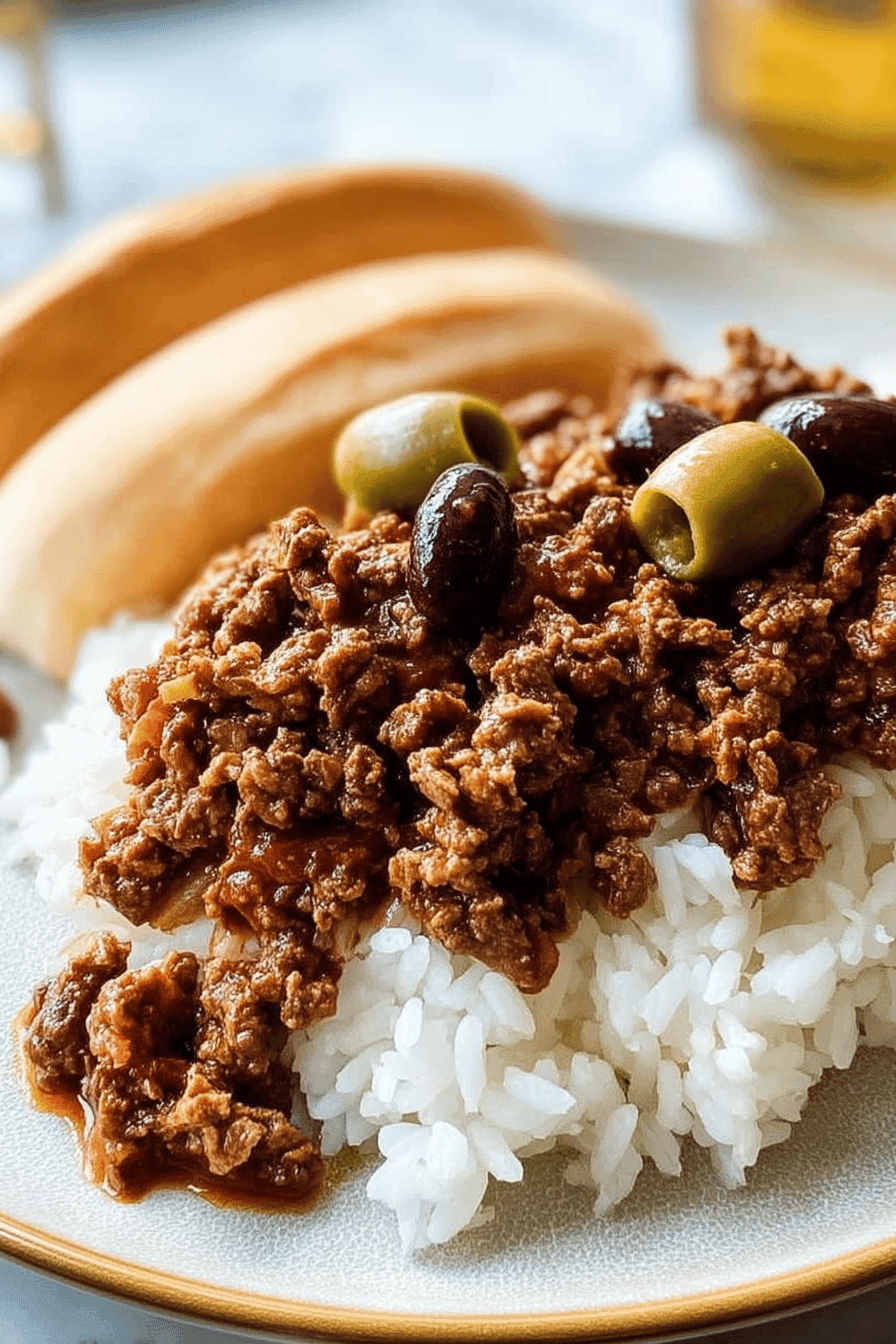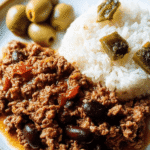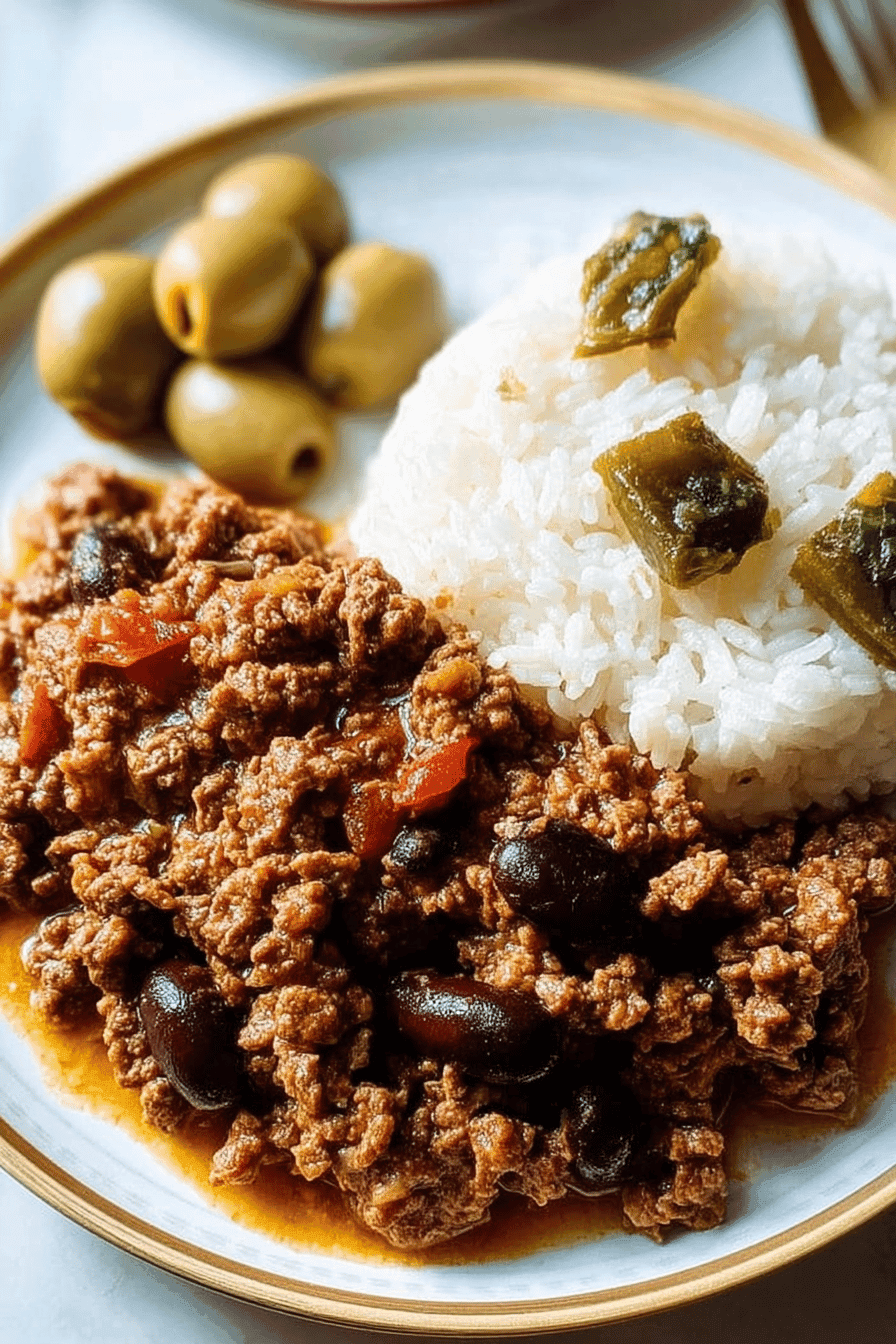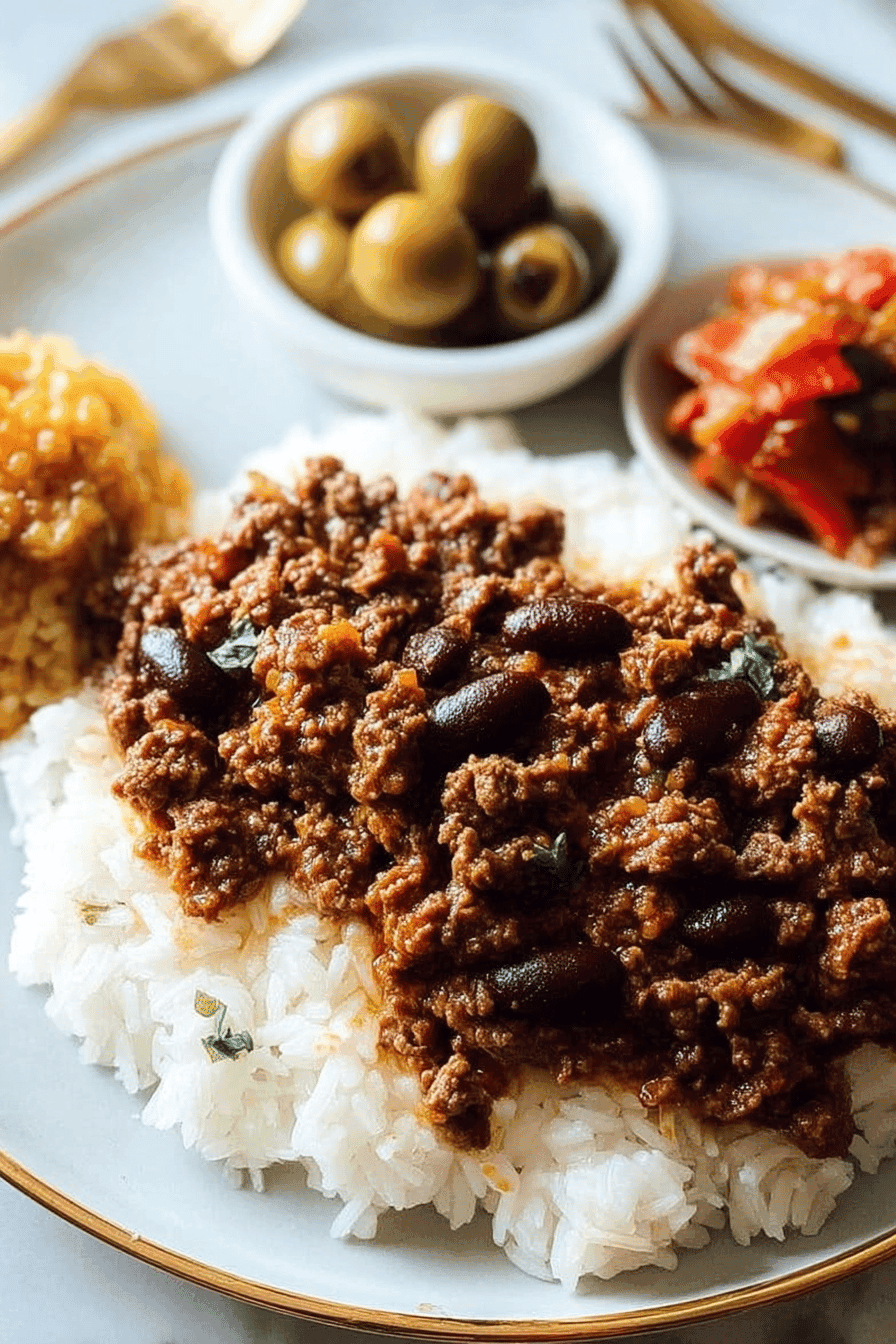Benefits and Advantages of cuban food recipes
Cuban food recipes are celebrated for their rich and bold flavors combined with ease of preparation, making them friendly for cooks at all experience levels. These dishes usually rely on fresh, wholesome ingredients that lead to nutritious, balanced meals. The clever use of spices and cooking techniques amplifies taste without excessive fats or sugars, supporting a healthful approach to eating. Typically, Cuban cuisine balances proteins, vegetables, and grains, presenting a well-rounded nutritional profile that fits various lifestyles.
One of the greatest advantages is the versatility of Cuban food recipes. Many can be easily adapted to meet different dietary needs, from vegan to gluten-free, ensuring that everyone can enjoy authentic island flavors. This adaptability paired with the hearty and satisfying nature of traditional dishes makes Cuban cuisine an excellent choice for both everyday meals and special occasions.
Jump To
- 1. Benefits and Advantages of cuban food recipes
- 2. Essential Ingredients for cuban food recipes
- 3. Dietary Substitutions to Customize Your cuban food recipes
- 4. How to Prepare the Perfect cuban food recipes: Step-by-Step Guide
- 5. Advanced Tips and Variations
- 6. How to Store cuban food recipes: Best Practices
- 7. Nutritional Value of cuban food recipes
- 8. FAQs: Frequently Asked Questions About cuban food recipes
- 9. cuban food recipes
Essential Ingredients for cuban food recipes
- Garlic – essential for aromatic depth and flavor
- Onions – build the base flavor often used in sofrito
- Bell peppers – add sweetness and color
- Cumin – a warm spice that complements meats and beans
- Oregano – adds earthiness and depth
- Citrus juices (lime and orange) – provide bright acidity and tenderizing effects
- Pork, chicken, beef – common protein sources
- Black beans and rice – staples for vegetarian and vegan options
- Plantains – versatile root vegetable used fried, baked, or boiled
- Olive oil – used for cooking, contributing healthy fats
These ingredients define Cuban cuisine’s signature taste and nutritional value. For example, precise measurements such as 2 teaspoons of cumin or 1 cup of black beans ensure consistency across recipes and culinary success. Additionally, root vegetables like yuca, malanga, and potatoes often appear, enriching dishes with varied textures and nutrients.
Dietary Substitutions to Customize Your cuban food recipes
To accommodate different dietary requirements, Cuban food recipes often allow for simple yet effective substitutions. Protein choices such as pork or chicken can be replaced with tofu or tempeh to create vegan-friendly meals without sacrificing protein content. Vegetable broth can substitute for chicken broth to keep dishes plant-based.
Gluten-free diets are easily supported by traditional staples like rice, beans, and plantains, as these ingredients do not contain gluten naturally. When aiming for lower calorie meals, cooking sprays may replace oils, and sugar use in marinades can be reduced or omitted. For a low-carb variation, cauliflower rice can take the place of white rice, retaining texture while lowering carbohydrate intake.
Incorporating these substitutions ensures that classic Cuban dishes remain accessible and enjoyable to a wider audience, adapting their nutritional profiles without compromising on authentic flavors.
How to Prepare the Perfect cuban food recipes: Step-by-Step Guide
- Gather Ingredients: Start by selecting fresh, high-quality ingredients measured precisely to balance flavors key for authentic results.
- Marinate Proteins: Mix your choice of meat or plant-based protein with lime juice, garlic, cumin, and oregano. Let it marinate to infuse traditional Cuban flavors.
- Sauté Aromatics: Heat olive oil gently and cook onions and bell peppers until softened, adjusting oil amounts to suit calorie preferences.
- Cook Protein or Beans: Add the marinated protein or beans to the pan, stirring occasionally to ensure even cooking and flavor distribution.
- Combine Grains or Alternatives: Stir in white rice or a substitute like cauliflower rice, mixing well with the vegetables and proteins.
- Simmer with Broth: Pour in broth, choosing vegetable or chicken stock depending on diet, and cook until grains absorb liquid and flavors meld.
- Adjust Seasoning: Taste and tweak flavors with salt, pepper, or extra citrus juice to brighten the dish as needed.
- Serve: Garnish with fresh herbs or citrus slices. Accommodate dietary preferences by omitting or substituting elements like gluten-containing toppings.
This flexible approach to Cuban cooking allows you to prepare traditional dishes easily while catering to vegan, gluten-free, or low-calorie needs without losing flavor authenticity.
Try pairing your Cuban meal with other comforting recipes like the Garlic Chicken or the hearty Marry Me Chicken Pasta for a well-rounded dinner.
Learn the essentials with this Authentic Cuban Food Recipes guide, and discover helpful Tips for Cooking Cuban Food.
Advanced Tips and Variations
Adding nuance and personal touches can enrich your experience with Cuban food recipes. For instance, marinate meats like pork or chicken in a mixture of citrus juices, garlic, oregano, and cumin for several hours or overnight to deepen flavors. Introducing smoked paprika or chili flakes offers a gentle smoky or spicy note that complements classic seasonings. Incorporate plantains in varied forms fried to crispy tostones or baked for a softer texture to add diversity to your plate.
For authentic bases, homemade sofrito made from sautéed onions, peppers, and garlic enhances flavor complexity. Vegan cooks can blend mashed beans into sauces for body and protein boost without meat. To refresh flavors, sprinkle freshly chopped cilantro or parsley right before serving. These adjustments let you adapt recipes while preserving the signature Cuban character.
How to Store cuban food recipes: Best Practices
Proper storage ensures your Cuban dishes stay fresh and tasty for later meals. Always refrigerate leftovers in airtight containers within two hours after cooking to prevent spoilage. Most Cuban recipes keep well refrigerated for up to four days. For longer preservation, freeze individual portions using freezer-safe containers or heavy-duty bags, labeling them with the date for easy tracking.
When reheating frozen dishes, thaw overnight in the refrigerator for even warming and reheat thoroughly either on the stovetop or microwave. Adding a splash of water or broth before reheating helps maintain moisture and prevents dryness. These guidelines protect the texture and flavor integrity of your dishes so you can enjoy them just as much the next day.
Nutritional Value of cuban food recipes
| Nutrient | Amount per Serving | Benefit |
|---|---|---|
| Calories | 300-400 kcal | Provides balanced energy for daily activities |
| Protein | 20-30 g | Supports muscle repair and immune function |
| Fat | Moderate (with emphasis on healthy fats) | Provides essential fatty acids and satiety |
| Carbohydrates | Varies (primarily from rice, plantains, beans) | Fuel for brain and body functions with dietary fiber |
| Vitamins & Minerals | A, C, potassium, iron | Supports immunity, energy, and overall wellness |

FAQs: Frequently Asked Questions About cuban food recipes
What are some classic Cuban dishes I can try at home?
Classic Cuban dishes you can easily make at home include Ropa Vieja (shredded beef in tomato sauce), Arroz con Pollo (chicken with rice), Picadillo (ground beef hash), and Tostones (fried green plantains). These dishes typically feature simple ingredients like rice, beans, pork, garlic, and citrus marinades. Starting with recipes that use common pantry items and fresh produce will help you capture authentic Cuban flavors without needing hard-to-find ingredients.
How do I make Cuban black beans taste authentic?
To make Cuban black beans taste authentic, cook them slowly with garlic, onions, bell peppers, and a touch of cumin. Add a splash of vinegar or lime juice near the end to brighten the flavor. Cuban black beans are creamy and well-seasoned, often served over white rice. Soaking dried beans overnight and simmering them gently helps enhance their natural taste and texture.
What is the best way to prepare Cuban-style mojo sauce?
Cuban mojo sauce is typically made by marinating garlic, sour orange juice (or a mix of orange and lime juice), olive oil, and spices like cumin and oregano. Let the sauce sit for at least an hour to let the flavors meld. Mojo is commonly used to marinate pork or chicken before grilling or roasting, and it also works well as a dipping sauce or dressing for vegetables.
Can I substitute ingredients in Cuban recipes if I don’t have traditional items like sour orange?
Yes, if you don’t have sour orange, a blend of fresh orange juice and lime juice in equal parts usually works well as a substitute in Cuban recipes. For plantains, green plantains can be replaced with unripe bananas in tostones. When substituting, aim to replicate the balance of sweet, tart, and savory that Cuban cuisine is known for.
How long does it take to cook a traditional Cuban meal from scratch?
Cooking a traditional Cuban meal from scratch generally takes about 1 to 2 hours, depending on the dish. Slow-cooked items like Ropa Vieja require simmering for an hour or more, while quicker dishes like Tostones or Cuban sandwiches can be ready in under 30 minutes. Planning ahead, like soaking beans overnight or marinating meat in advance, can save time and improve flavor.

cuban food recipes
- Total Time: Varies by recipe
- Yield: Varies by recipe
- Diet: Varies by recipe
Description
🥘 Cuban Food Recipes bring the rich, bold flavors of traditional island dishes straight to your kitchen, perfect for family meals and celebrations.
🍹 These authentic recipes cover everything from hearty stews to refreshing mojitos, offering step-by-step guidance for delightful Latin flavors anyone can enjoy.
Ingredients
Garlic
Onions
Bell peppers
Cumin
Oregano
Citrus juices (lime and orange)
Pork, chicken, beef
Black beans and rice
Plantains
Olive oil
Instructions
Gather Ingredients: Start by selecting fresh, high-quality ingredients measured precisely to balance flavors key for authentic results.
Marinate Proteins: Mix your choice of meat or plant-based protein with lime juice, garlic, cumin, and oregano. Let it marinate to infuse traditional Cuban flavors.
Sauté Aromatics: Heat olive oil gently and cook onions and bell peppers until softened, adjusting oil amounts to suit calorie preferences.
Cook Protein or Beans: Add the marinated protein or beans to the pan, stirring occasionally to ensure even cooking and flavor distribution.
Combine Grains or Alternatives: Stir in white rice or a substitute like cauliflower rice, mixing well with the vegetables and proteins.
Simmer with Broth: Pour in broth, choosing vegetable or chicken stock depending on diet, and cook until grains absorb liquid and flavors meld.
Adjust Seasoning: Taste and tweak flavors with salt, pepper, or extra citrus juice to brighten the dish as needed.
Serve: Garnish with fresh herbs or citrus slices. Accommodate dietary preferences by omitting or substituting elements like gluten-containing toppings.
Notes
🌿 Use traditional spices like oregano, cumin, and garlic to capture authentic Cuban flavors.
🍲 Follow slow-cooking instructions carefully to develop deep, rich tastes in stews and braises.
📸 Take advantage of recipe photos and clear steps to ensure successful recreations of classic dishes.
- Prep Time: Varies by recipe
- Cooking Time: Varies by recipe
- Cook Time: Varies by recipe
- Category: Various
- Method: Various
- Cuisine: Cuban
Nutrition
- Serving Size: Varies by recipe
- Calories: Varies by recipe
- Sugar: Varies by recipe
- Sodium: Varies by recipe
- Fat: Varies by recipe
- Saturated Fat: Varies by recipe
- Unsaturated Fat: Varies by recipe
- Trans Fat: Varies by recipe
- Carbohydrates: Varies by recipe
- Fiber: Varies by recipe
- Protein: Varies by recipe
- Cholesterol: Varies by recipe
Keywords: Cuban Food, Latin Flavors, Traditional Recipes, Cuban Cuisine



¡Qué deliciosa manera de probar algo nuevo! I made the ropa vieja recipe and it transported me back to my favorite little restaurant in Miami. 🌴 Can’t wait to try another dish this weekend. Thank you for sharing!
★★★★★